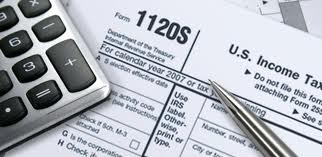The Tax and Accounting office of Certified Public Accountant can assist you in choosing the right legal form for your business. Choosing the proper business entity is a complex matter, which should be handled by an accountant professional. Many C corporations who are tired of the double taxing drawback – income is taxed to the corporation as it is earned and then again to you personally wh en it is paid out in compensation or dividends – choose to covert to an S corporation. However, in trying to avoid this double tax predicament, business owners might run into built-in gains tax.
en it is paid out in compensation or dividends – choose to covert to an S corporation. However, in trying to avoid this double tax predicament, business owners might run into built-in gains tax.
The built-in gains tax can blindside business owners who convert from a C corporation to an S corporation. In some cases, the conversion may not even be worth the price of admission. Nevertheless, with some advance planning from a professional certified public accountant, you may be able to minimize the impact of the built-in gains tax or discover additional tax benefits through a C corporation continue with you current business structure.
A corporation may owe income tax at regular income tax rates on a net recognized built-in gain occurring within the 10 years following a conversion to S corp status. The amount of the tax is based on the difference between the fair market value of property sold or otherwise disposed of and the basis of the property at the time of the conversion. The built-in gains tax generally applies to a corporation if:
- It was a C corporation prior to the S corporation election
- The election was made after 1986
- It has a recognized built-in gain within the 10-year recognition period; and
- The net recognized built-in gain for the tax year doesn’t exceed the net unrealized built-in in gain minus the net recognized built-in gain for prior years in the recognition period (to the extent such gains were subject to tax).
The built-in gains tax is computed by applying the highest corporate tax rate to the S corp’s built-in gain for the year. Currently, the top tax rate is 35%.
Nevertheless, the situation may not be as awful as it appears. For starters, any net operating loss (NOL) carryforward in a year in which the corporation was a C corporation may be deducted against the net recognized built-in gain of the S corporation. In addition, your firm may use capital losses carried forward from prior years to offset the built-in gains tax. Finally, excess business credits carried over from prior years may reduce the tax liability on built-in gains.
If you are contemplating a switch to S corporation status, it is important to have a professional accountant evaluate your situation and provide you with an in-depth analysis. Tax law is an extremely complicated area, especially the tax rules concerning a conversion from a C corporation to an S corporation status. Take advantage of a tax expert, like Emil Estafanous, CPA and don’t pay extra tax than what the law requires. Contact the Tax and Accounting office of Certified Public Accountant, Emil Estafanous at (562) 868-6333 and he will be glad to provide you with assistance for all your accounting and tax needs.
Tweet
